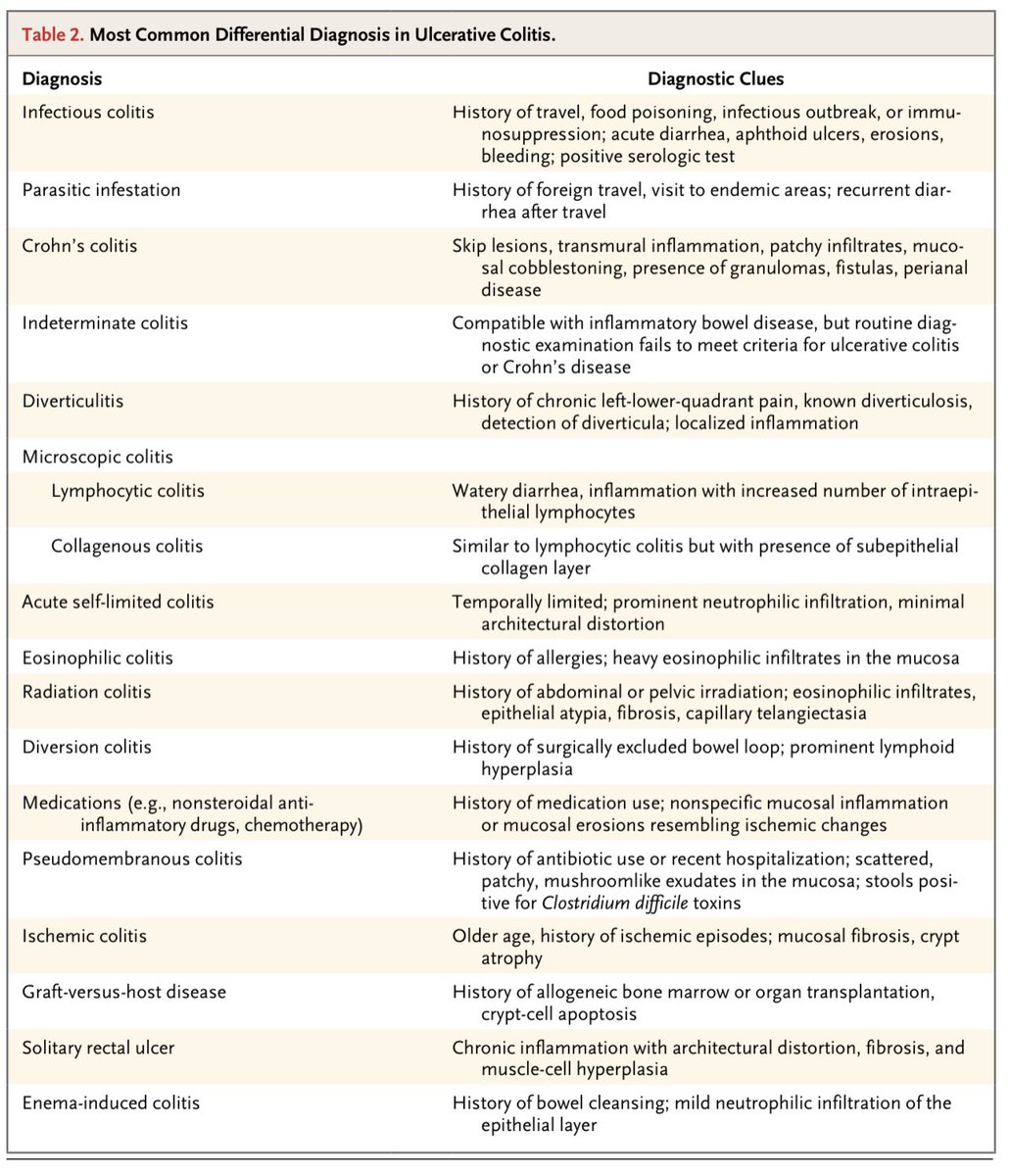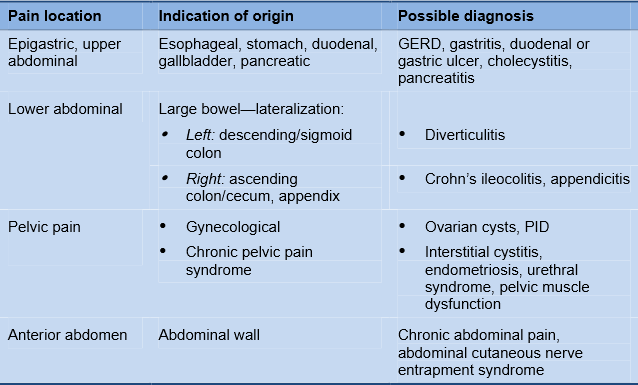Difference between colitis and diverticulitis. Diverticulitis vs. Ulcerative Colitis: Understanding Key Differences and Similarities
What are the main differences between diverticulitis and ulcerative colitis. How do symptoms, causes, and treatments compare for these two digestive conditions. What complications can arise from diverticulitis versus ulcerative colitis.
Defining Diverticulitis and Ulcerative Colitis
Diverticulitis and ulcerative colitis are two distinct digestive conditions that affect the colon, yet they have some important differences in their underlying causes and manifestations. To understand these conditions better, let’s examine their definitions:
What is Diverticulitis?
Diverticulitis occurs when small pouches called diverticula, which form in the lining of the colon, become inflamed or infected. These pouches push outward through weak spots in the colon wall, a condition known as diverticulosis. When inflammation or infection sets in, it leads to diverticulitis.
What is Ulcerative Colitis?
Ulcerative colitis (UC) is a type of inflammatory bowel disease (IBD) characterized by chronic inflammation and ulceration of the large intestine’s lining. Unlike diverticulitis, which affects specific areas where pouches have formed, UC typically involves continuous areas of inflammation in the colon and rectum.

Comparing Symptoms: Diverticulitis vs. Ulcerative Colitis
While both conditions can cause significant discomfort, the symptoms of diverticulitis and ulcerative colitis differ in several ways:
Diverticulitis Symptoms
- Severe abdominal pain, often on the left side
- Sudden onset of symptoms
- Fever and chills
- Constipation or diarrhea
- Nausea and vomiting
- Rectal bleeding (less common)
Ulcerative Colitis Symptoms
- Persistent diarrhea, often with blood or mucus
- Abdominal pain and cramping
- Rectal bleeding
- Urgent need for bowel movements
- Fatigue and weight loss
- Symptoms may come and go in periods of flares and remission
Why do the symptoms differ? The localized nature of diverticulitis often results in more focused abdominal pain, while the widespread inflammation in UC leads to more systemic symptoms affecting the entire colon.
Underlying Causes and Risk Factors
Understanding the causes and risk factors for diverticulitis and ulcerative colitis can help in prevention and management strategies:
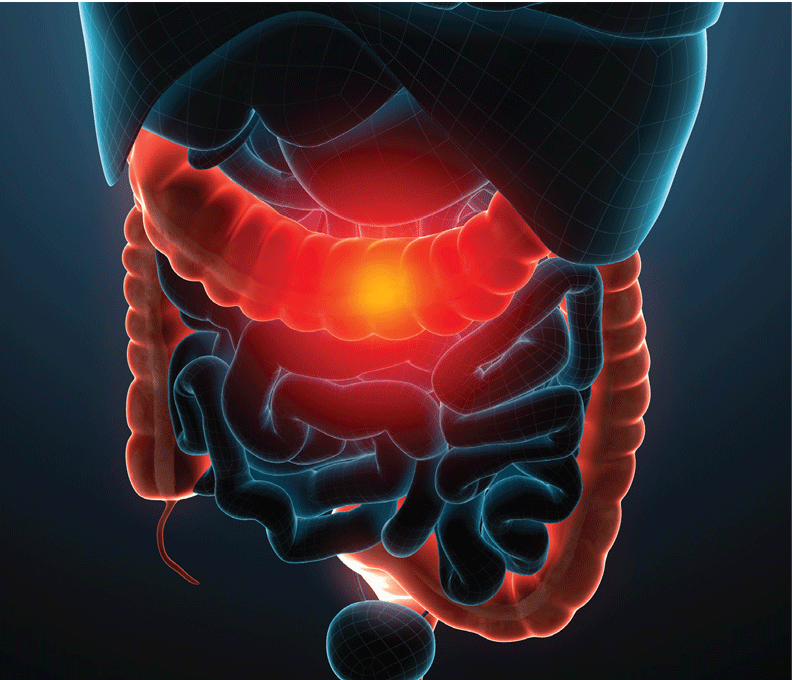
Diverticulitis Causes and Risk Factors
- Low-fiber diet
- Aging (more common in people over 40)
- Obesity
- Lack of exercise
- Smoking
- Certain medications (e.g., NSAIDs)
Ulcerative Colitis Causes and Risk Factors
- Genetic predisposition
- Immune system dysfunction
- Environmental factors
- Stress
- Certain dietary factors
- Smoking (interestingly, may have a protective effect)
How do these causes differ? Diverticulitis is often linked to lifestyle factors, particularly diet, while ulcerative colitis has a stronger genetic and immune system component.
Diagnostic Approaches for Diverticulitis and Ulcerative Colitis
Accurate diagnosis is crucial for proper treatment. Here’s how healthcare providers typically diagnose these conditions:
Diagnosing Diverticulitis
- Physical examination
- Blood tests to check for infection
- CT scan to visualize inflamed diverticula
- Colonoscopy (usually performed after acute symptoms subside)
Diagnosing Ulcerative Colitis
- Colonoscopy with biopsy
- Blood tests to check for anemia and inflammation markers
- Stool sample analysis
- Imaging tests (X-ray, CT scan, or MRI)
Why are different diagnostic approaches used? The acute nature of diverticulitis often requires immediate imaging, while the chronic nature of UC allows for more comprehensive testing, including direct visualization of the colon through colonoscopy.

Treatment Strategies and Management
Treatment approaches for diverticulitis and ulcerative colitis differ due to their distinct natures:
Treating Diverticulitis
- Antibiotics for infection
- Temporary liquid or low-fiber diet
- Pain management
- Surgery in severe cases or complications
Managing Ulcerative Colitis
- Anti-inflammatory medications (e.g., 5-ASA drugs, corticosteroids)
- Immunosuppressants
- Biologic therapies
- Dietary modifications
- Surgery (colectomy) in severe cases
How do treatment goals differ? Diverticulitis treatment aims to resolve acute inflammation and prevent recurrence, while UC management focuses on inducing and maintaining remission over the long term.
Potential Complications and Long-term Outlook
Both diverticulitis and ulcerative colitis can lead to serious complications if left untreated or poorly managed:
Diverticulitis Complications
- Abscess formation
- Perforation of the colon
- Fistula development
- Intestinal obstruction
- Peritonitis
Ulcerative Colitis Complications
- Severe bleeding
- Toxic megacolon
- Increased risk of colorectal cancer
- Malnutrition
- Liver disease (e.g., primary sclerosing cholangitis)
Why is the long-term outlook different? Diverticulitis can often be managed with lifestyle changes and occasional treatment, while UC typically requires ongoing management to prevent complications and maintain quality of life.
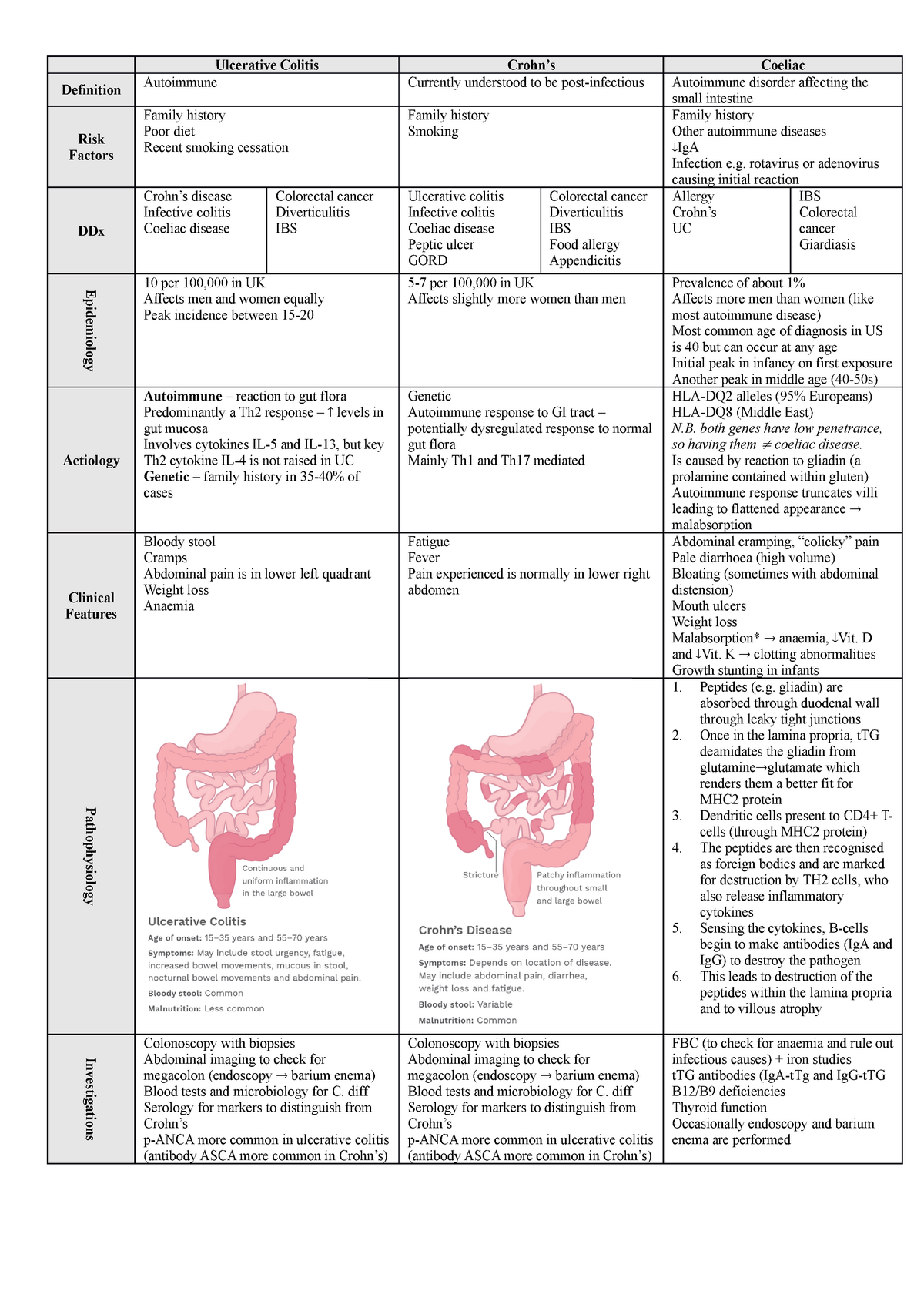
Lifestyle Modifications and Prevention Strategies
While the approaches to preventing diverticulitis and ulcerative colitis differ, lifestyle modifications can play a crucial role in managing both conditions:
Diverticulitis Prevention
- High-fiber diet
- Regular exercise
- Maintaining a healthy weight
- Staying hydrated
- Quitting smoking
Ulcerative Colitis Management
- Stress reduction techniques
- Identifying and avoiding trigger foods
- Regular exercise
- Medication adherence
- Regular check-ups and colonoscopies
How do preventive strategies differ? Diverticulitis prevention focuses heavily on dietary and lifestyle factors, while UC management involves a more comprehensive approach including medication, stress management, and regular monitoring.
Impact on Quality of Life and Psychological Aspects
Both diverticulitis and ulcerative colitis can significantly impact a person’s quality of life, but in different ways:
Living with Diverticulitis
Diverticulitis can cause intermittent periods of severe pain and discomfort, leading to:
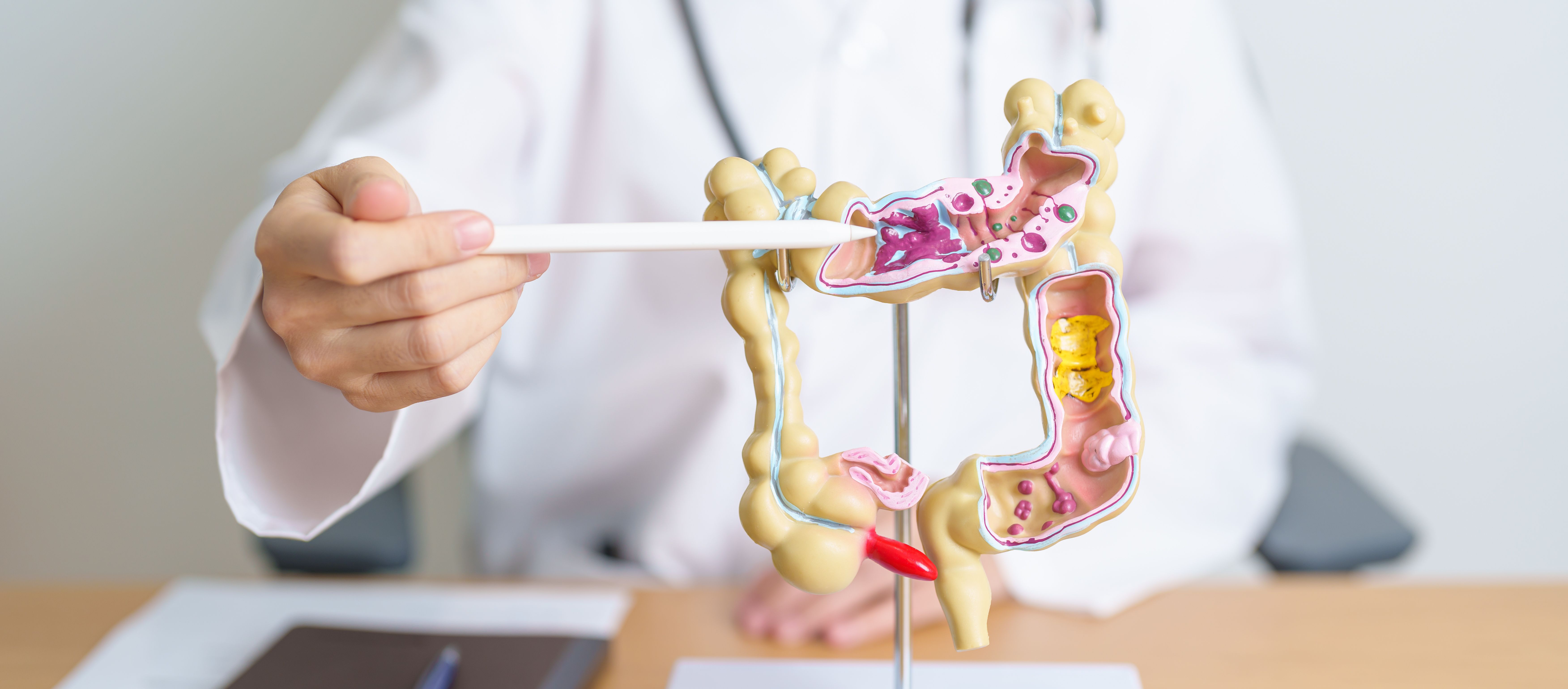
- Anxiety about potential flare-ups
- Dietary restrictions
- Disruption of daily activities during acute episodes
- Concerns about potential complications
Coping with Ulcerative Colitis
The chronic nature of UC can have ongoing effects on daily life, including:
- Emotional stress due to unpredictable symptoms
- Social isolation during flares
- Impact on work and relationships
- Body image issues related to medication side effects or surgery
- Higher risk of depression and anxiety
Why do psychological impacts differ? The episodic nature of diverticulitis may cause intermittent stress, while the chronic, unpredictable course of UC can lead to more persistent psychological challenges.
Understanding the differences between diverticulitis and ulcerative colitis is crucial for proper diagnosis, treatment, and management. While both conditions affect the colon, their causes, symptoms, and long-term implications vary significantly. Diverticulitis is often a result of lifestyle factors and can be managed with dietary changes and occasional medical intervention. In contrast, ulcerative colitis is a chronic inflammatory condition requiring ongoing medical management and lifestyle adaptations.
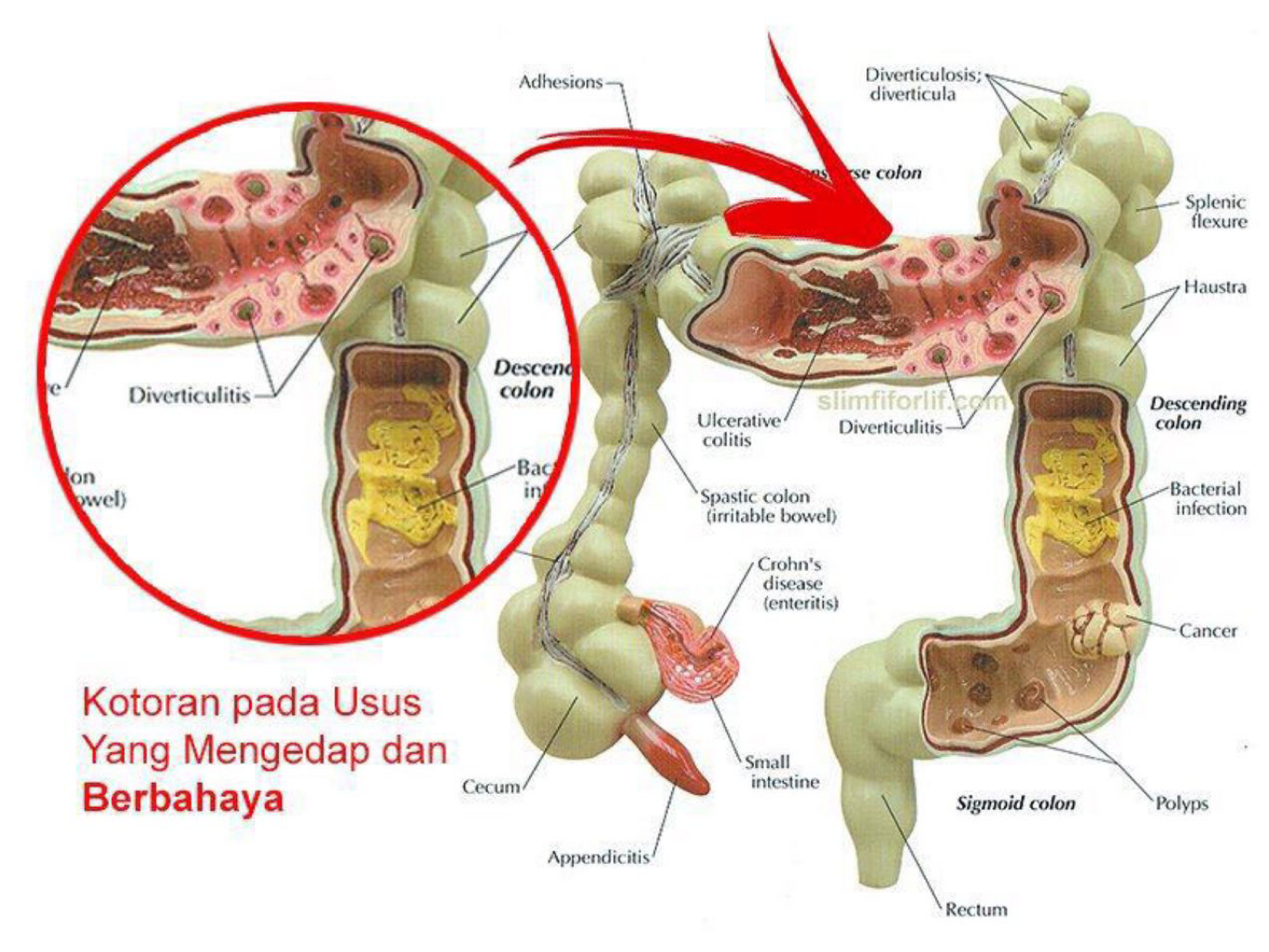
For individuals experiencing persistent digestive symptoms, it’s essential to consult with a healthcare provider for an accurate diagnosis. Early detection and appropriate treatment can significantly improve outcomes and quality of life for those affected by either condition. As research continues, new treatments and management strategies may emerge, offering hope for better control of symptoms and reduced complications for both diverticulitis and ulcerative colitis.
Diverticulitis vs. ulcerative colitis: A comparison
Diverticulitis refers to inflammation of the diverticula, which are small pouches that form in the colon lining. Ulcerative colitis (UC) is an inflammatory bowel disease (IBD) where people develop inflammation and ulcers in the lining of the large intestine.
In this article, we compare symptoms, diagnosis, treatment, complications, and outlook of both conditions.
A note about sex and gender
Sex and gender exist on spectrums. This article will use the terms “male,” “female,” or both to refer to sex assigned at birth. Click here to learn more.
Was this helpful?
Small pouches called diverticula can form in the colon lining and push out through weak spots in the outer wall of the colon. If a person has diverticula in their colon, they have what health experts refer to as diverticulosis.
Diverticulitis is a condition where the diverticula become inflamed. Around 10–25% of individuals with diverticulosis may have diverticulitis.
People may also use the term “diverticular disease” for diverticulitis or diverticular bleeding or if diverticula cause chronic symptoms.
UC is an IBD where an overreactive immune system causes inflammation and ulcers to develop in the lining of the large intestine.
UC is a chronic condition, and people may go through periods of remission, when they experience no symptoms of UC.
In the table below, we compare the two conditions:
| Diverticulitis | UC | |
|---|---|---|
| Definition | Diverticulitis is a condition where small pouches form in the intestinal lining and become inflamed. | UC is a type of IBD where an overactive immune response causes inflammation and ulcers in the intestinal lining. |
| Symptoms | Symptoms can include: • abdominal pain on one side • constipation • diarrhea • nausea • vomiting • fever • chills • rectal bleeding | Symptoms can include: • diarrhea • an urgent need for bowel movements • blood or mucus in stool • abdominal pain and cramping |
| Causes | There is no known cause, but the following may play a part: • genetics • diet low in fiber and high in red meat • immune system problems • changes in the microbiome • bacteria trapped in the diverticula | There is no known cause, but the following may play a role: • genetics • unusual immune system reactions • microbiomes in the digestive tract • environmental factors |
| Triggers | Low fiber consumption and high red meat intake may increase the risk of diverticulitis and complications.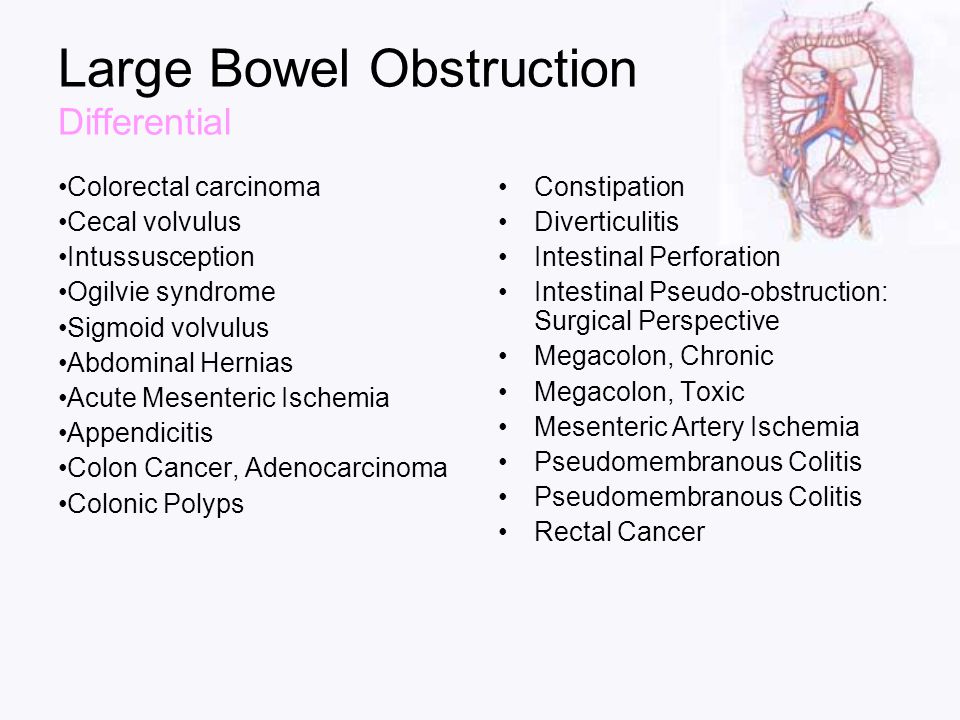 | Certain foods, such as spicy foods, lactose, and sugary foods, may trigger UC flares. |
| Treatment | Treatment options include: • antibiotics • a temporary clear liquid diet • pain relief medication • surgery to remove part of the colon, in some cases | Treatment can include medications to reduce inflammation, and, in some cases, surgery to remove the colon and rectum. |
| Cancer risk | There may be a slightly increased risk of colorectal cancer, with older adults and those with complicated diverticulitis being at higher risk. | There is an increased risk of developing colorectal cancer. |
| Complications | Complications can include: • pelvic abscess • intestinal perforation • fistulas • peritonitis • bowel obstruction • sepsis • rectal bleeding | Complications can include: • rectal bleeding • iron deficiency anemia • expansion or tears in the colon • blood clots • primary sclerosing cholangitis (PSC) • toxic megacolon • intestinal perforation |
| Outlook | The outlook depends on a person’s age and overall health and the severity of diverticulitis. Treatment may result in none to mild symptoms in two-thirds of people. Treatment may result in none to mild symptoms in two-thirds of people. | UC requires long-term management. Treatment can help people maintain remission and live a relatively normal life. |
In the sections below, we outline the symptoms of diverticulitis and UC.
Diverticulitis
Symptoms of diverticulitis may include:
- abdominal pain
- constipation or diarrhea
- fever
- chills
- nausea or vomiting
- increased urgency, frequency, or discomfort when urinating, if an inflamed part of the colon comes into contact with the wall of the bladder
- rectal bleeding
People with diverticulitis usually experience severe and sudden abdominal pain, but they may also have mild pain that worsens over several days. The pain may be constant or come and go. Also, over time, the pain intensity may vary.
UC
Symptoms of UC can be mild to severe and can include:
- persistent diarrhea
- rectal bleeding or blood in stool
- cramping or abdominal pain
- mucus or pus in stool
- an urgent need to have a bowel movement
- a persistent urge to have a bowel movement, even if bowels are empty
UC symptoms can come on suddenly or start gradually and then worsen over time.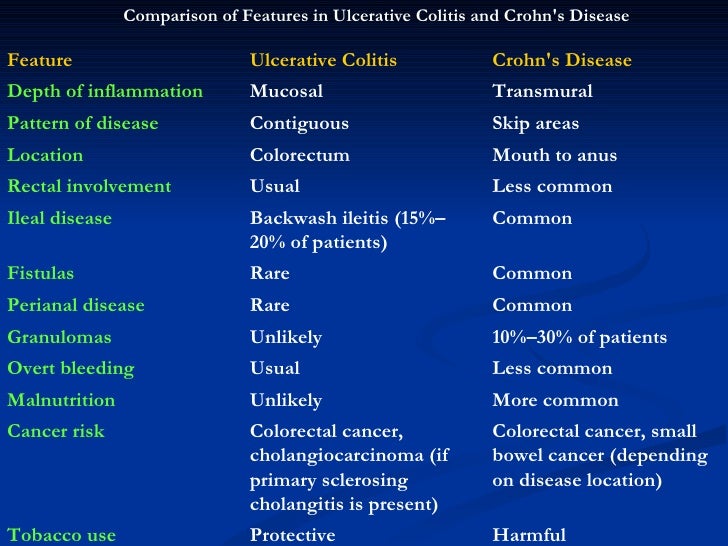
Most people with UC have flares, which is when symptoms are present, and periods of remission, which is when no symptoms occur. Remission may last for weeks or years.
Healthcare professionals do not know the exact cause of either condition. However, they are aware of factors that can increase the likelihood of developing diverticulitis or UC.
Diverticulitis
There is no known cause of diverticulitis. Certain factors, however, may increase the risk of diverticular disease or cause its development. These include:
- genetics
- stool or bacteria becoming trapped in a pouch in the colon
- a change to the microbiome in the intestines
- issues with muscles, nerves, or connective tissue in the colon
- issues with the immune system
Lifestyle factors may also play a role, including:
- following a low fiber diet
- eating a diet high in red meat
- not engaging in physical activity
- taking nonsteroidal anti-inflammatory drugs and steroids
- having obesity
- smoking
Diverticulitis affects both males and females. It is more common in males under the age of 50 years and in females aged 50–70 years. In people over 70 years, diverticulitis is more common in females.
It is more common in males under the age of 50 years and in females aged 50–70 years. In people over 70 years, diverticulitis is more common in females.
UC
Health experts do not know the exact cause of UC. They think, however, that the following may play a role:
- Genetics: UC can run in families, so having certain genes may increase the risk of developing UC.
- Overactive immune system: The immune system creates temporary inflammation to help protect and heal the body from infection or illness. With UC, inflammation continues for longer than necessary, leading to chronic inflammation and ulcers in the intestinal lining.
- Microbiome: There may be differences between the microbiomes in the digestive tract of people with IBD and individuals without IBD.
- Environment: External factors and surroundings may affect a person’s genes, immune system, and microbiome, potentially playing a role in IBD.

People with UC or diverticulitis need to be careful about their dietary choices.
Diverticulitis
According to the National Institute of Diabetes and Digestive and Kidney Diseases (NIDDK), a diet low in fiber and high in red meat may increase the risk of diverticulitis.
Consuming more fiber and reducing red meat intake may lower the risk of diverticulitis and complications.
There is no evidence to suggest a link between eating nuts, seeds, or popcorn and an increased risk of diverticulitis or diverticular bleeding.
Learn more about the best foods for diverticulitis here.
UC
People may find that certain foods can trigger or worsen symptoms of UC.
Although different for each person, the following foods may trigger symptoms in some individuals:
- insoluble fiber, such as raw cruciferous vegetables, whole nuts, and whole grains
- lactose
- sugary foods
- high fat, fried, or greasy foods
- alcohol and caffeine
- spicy foods
Learn more about foods to eat and avoid with UC here.
Healthcare professionals may recommend the following treatment options:
Diverticulitis
Treatment for diverticulitis may include:
- antibiotics
- a temporary clear liquid diet, to allow the colon to rest
- pain relief medication, such as acetaminophen
In severe cases, people may require surgery to remove a section of the colon.
UC
Treatment for UC may include long-term use of medications to control inflammation, such as:
- immunosuppressants
- biologics
- corticosteroids
- aminosalicylates
A person may require surgery to remove the colon and rectum if their symptoms do not improve or if they have colorectal cancer or any serious complications.
Surgeons may also perform an ileostomy. They will attach the end of the ileum, which is a part of the small intestine, to an opening in the abdomen called a stoma. This allows the body to store and remove stools in an alternative way.
To diagnose each of the two conditions, doctors may carry out a physical examination and order the following:
- blood tests
- stool tests
- imaging tests, such as a CT scan, an MRI scan, and an ultrasound
- colonoscopy
A healthcare professional may order a colonoscopy to help diagnose diverticulitis and an endoscopy to diagnose UC.
Diverticulitis and UC can cause the following complications:
Diverticulitis
Complications of diverticulitis may include:
- a pelvic abscess, when an infection causes a pus-filled pocket in the pelvic area
- an intestinal perforation, which is a hole in the wall of the intestine
- a fistula, which is an abnormal opening that allows contents to leak out
- peritonitis, an infection in the lining of the abdomen
- a blockage in the intestines
- sepsis
- rectal bleeding
According to a 2020 meta-analysis, there is a small risk of colorectal cancer with diverticulitis. Older adults and those with complicated diverticulitis have a higher risk of developing this type of cancer.
UC
Complications of UC may include:
- rectal bleeding
- iron deficiency anemia
- expansion or tears in the colon
- blood clots
- PSC
Moreover, toxic megacolon and perforation are potential complications that may warrant emergency surgery and colectomy.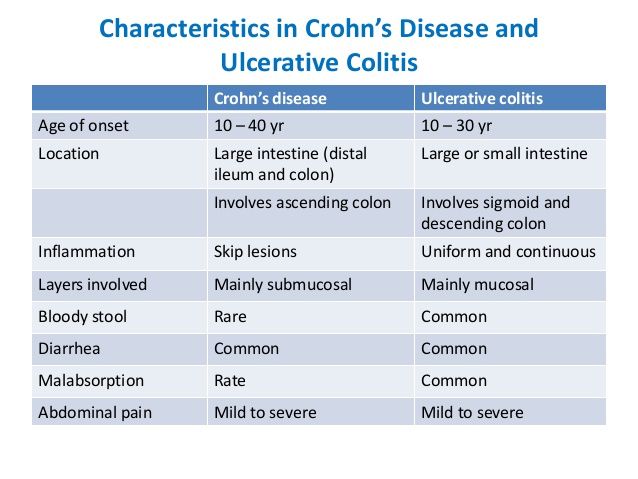
In long-term cases of UC, there is an increased risk of precancerous changes and colorectal cancer. PSC can also increase the risk of bile duct cancer.
People can take the following steps to help prevent UC and diverticulitis from developing:
Diverticulitis
Factors that may help lower the risk of developing diverticulitis include:
- eating a diet high in fiber and low in red meat
- engaging in regular physical activity
- avoiding smoking
- reaching or maintaining a moderate body weight
If people have diverticulitis without any complications, a doctor may suggest surgery to remove part of the colon to prevent diverticulitis from reoccurring.
UC
Preventive measures for UC include:
- avoiding smoking
- getting regular exercise
- eating a balanced diet
- avoiding trigger foods
The outlook for each condition can depend on a variety of factors.
Diverticulitis
The outlook for people with diverticulitis can depend on a range of factors, including:
- severity of the condition
- a person’s age and overall health
- any coexisting conditions
Most people with uncomplicated diverticulitis will have a positive response to treatment.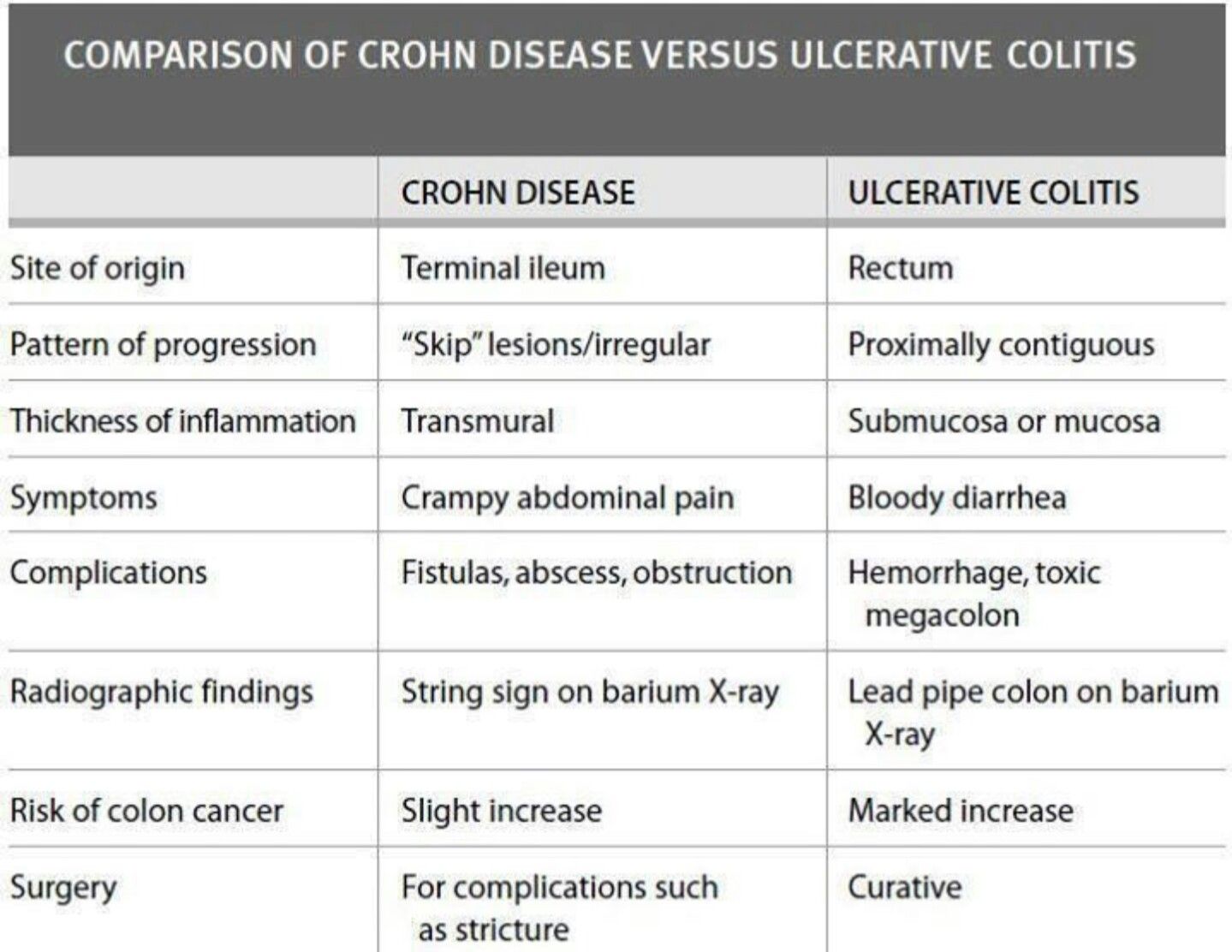 Around 15% of people may require surgery to treat diverticulitis. After successful treatment, one-third of people will not have any symptoms, one-third will experience mild symptoms, and one-third will have recurrent diverticulitis.
Around 15% of people may require surgery to treat diverticulitis. After successful treatment, one-third of people will not have any symptoms, one-third will experience mild symptoms, and one-third will have recurrent diverticulitis.
UC
UC is a chronic condition that a person will need to manage throughout their life.
Managing flare-ups and uncomfortable symptoms can be difficult for some individuals, but effective treatment can help people lead a relatively normal life.
By managing their condition, some individuals with UC may experience remission for weeks or even years.
Diverticulitis is a condition where small pouches form in the intestinal lining and become inflamed. UC is a type of IBD in which an overactive immune response causes inflammation and ulcers in the large intestine.
Medication and lifestyle factors can help manage both conditions, which in turn may help a person relieve symptoms or maintain remission.
In severe cases, people may require surgery to remove part of the colon or rectum.
Ulcerative Colitis vs. Diverticulitis: How They Differ
Ulcerative colitis and diverticulitis are both conditions that affect your digestive system. Although they have some common symptoms, they are entirely different conditions, with unique causes and treatment plans.
Both ulcerative colitis and diverticulitis are digestive conditions that can cause uncomfortable symptoms like stomach pain, diarrhea, and blood in your stool. But there are key differences between the two.
Diverticulitis is a condition characterized by the development of small, bulging sacs in the colon (large intestine). On the other hand, ulcerative colitis is a chronic condition where the inner lining of the colon becomes inflamed and causes ulcers to develop.
Diverticulitis and ulcerative colitis require different treatment plans, which is why it’s important that you visit your healthcare professional if you have symptoms of either condition.
Let’s take a look at the differences and similarities between ulcerative colitis and diverticulitis, as well as how to get a diagnosis and treatment.
While both conditions affect your digestive system and have several overlapping symptoms, ulcerative colitis and diverticulitis are two distinct conditions with unique causes and symptoms. Here’s what to know about each condition.
Ulcerative colitis: Causes and symptoms
Ulcerative colitis is a type of inflammatory bowel disease (IBD). People with ulcerative colitis develop inflammation and ulcers in their large intestine. It’s considered chronic, meaning that people who have the condition have it for life. Still, with the right treatment, many people are able to effectively manage their symptoms.
It’s not known exactly what causes ulcerative colitis. Medical experts believe the following factors may play a role:
- Your genes: If your parents or grandparents had ulcerative colitis, you may have inherited certain genes that make you more prone to developing it too.
- Unusual immune reactions: It’s thought that ulcerative colitis may be triggered by abnormal reactions in the immune system.

- Microbiome differences: Certain bacteria, viruses, and fungi in your digestive tract (known as your microbiome) may play a role in triggering ulcerative colitis.
- Environmental factors: Experts believe that your surroundings may play a role in causing ulcerative colitis, especially if you have other risk factors.
Ulcerative colitis symptoms can vary a lot from person to person. Some of the most common symptoms include:
- diarrhea
- stomach pain
- blood in stool
- decreased appetite
- weight loss
- fatigue
- malnutrition, such as anemia
- decreased growth (in children)
Diverticulitis: Causes and symptoms
Diverticulitis is a condition where small pouches or sacs develop in the lining of your colon (large intestine). These pouches in the wall of your colon can become infected or inflamed, causing a diverticulitis flare-up.
Although there’s no single cause of diverticulitis, it does become more common as you age. There are several other factors that can increase your risk of developing diverticulitis, such as:
There are several other factors that can increase your risk of developing diverticulitis, such as:
- a family history of diverticulitis
- a diet that’s low in fiber
- a diet that’s high in red meat
- having obesity
- a sedentary lifestyle
- smoking
- decreased immune function
- certain medications, such as nonsteroidal anti-inflammatory drugs (NSAIDs) and steroids.
Symptoms of diverticulitis are mainly digestive in nature, and may be moderate to more severe. Typical symptoms of diverticulitis include:
- stomach pain, usually on the left side
- abdominal bloating
- constipation
- diarrhea
- vomiting
- nausea
- fever
- chills
Because both ulcerative colitis and diverticulitis have digestive symptoms — and many symptoms that overlap — it’s not possible to tell which condition you have from symptoms alone. That’s why it’s vital to talk with your doctor if you have symptoms of either condition.
The type of physician that diagnoses these conditions is called a gastroenterologist. Many people visit their primary care provider (PCP) first with digestive symptoms, and then get a referral to a gastroenterologist if their PCP thinks a full workup and diagnosis is necessary.
Many of the tests used to help diagnose ulcerative colitis and diverticulitis are the same. Testing may include:
- blood tests to look for nutritional deficiencies and signs of infections
- stool tests
- a colonoscopy, to visualize the lining of the rectum and colon
If your doctor thinks you may have diverticulitis, you may also have imaging tests, such as an MRI, CT scan, or an ultrasound.
If ulcerative colitis is suspected, your doctor may also order a flexible sigmoidoscopy, which is used to view and analyze the lining of the rectum and lower colon. An ulcerative colitis diagnosis often also involves a biopsy of the large intestine.
Ulcerative colitis and diverticulitis have different treatment plans and treatment durations.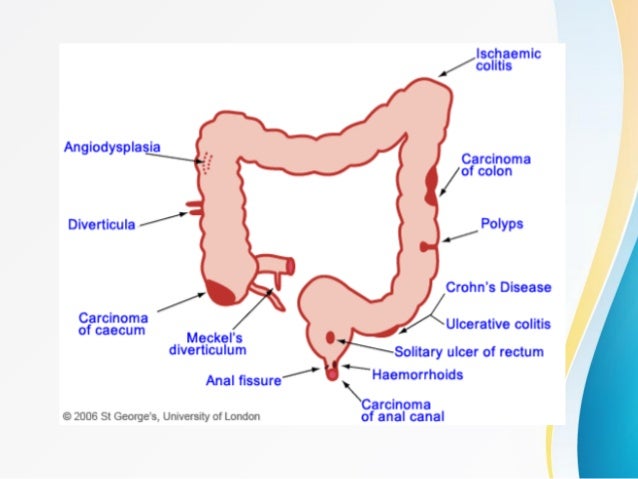 Again, this is why it’s imperative to get a proper diagnosis so that your treatment plan is geared toward the correct condition.
Again, this is why it’s imperative to get a proper diagnosis so that your treatment plan is geared toward the correct condition.
Treatment for diverticulitis
Typically, treatment for diverticulitis has involved antibiotics to treat infections, along with dietary changes like increased fiber or fiber supplements. However, more recently, experts recommend preserving antibiotics for the most complicated cases of diverticulitis.
Sometimes medications are prescribed to decrease inflammation, and pain relievers are often used to reduce pain and discomfort as the infection clears.
Treatment for ulcerative colitis
Treatment for ulcerative colitis involves a combination of medication and dietary changes, and less commonly, surgery.
Most medications prescribed for ulcerative colitis aim to reduce inflammation in the colon. The type of medicine that’s prescribed will depend on the severity of the disease. Common medications include:
- Aminosalicylates: Recommended for people with mild to moderate ulcerative colitis, this type of medication (also known as 5-ASA drugs), helps ease symptoms by decreasing inflammation in the colon.

- Corticosteroids: Used for mild to moderate ulcerative colitis, corticosteroids help decrease your body’s overall immune system response, which reduces inflammation. This medication is usually prescribed for people who don’t get symptom relief from aminosalicylates.
- Immunosuppressants: Prescribed for people with moderate to severe ulcerative colitis, immunosuppressants decrease your body’s response to its own immune system.
- Biologics: Developed in a lab from a living organism, these drugs prevent specific proteins in your body from causing inflammation. Biologic drugs are usually used to treat moderate to severe ulcerative colitis.
Surgery is usually only recommended when patients don’t respond to other medical treatments.
Both ulcerative colitis and diverticulitis can be serious, especially if untreated. While most people recover after an acute episode of diverticulitis, ulcerative colitis requires lifelong treatment.
If left untreated, ulcerative colitis can be severe. Complications may lead to:
- a perforated colon (hole in the wall of the large intestine)
- fulminant colitis (swelling and distention of the colon)
- toxic megacolon (abnormal and severe dilation of the colon)
- severe dehydration
Treatment of ulcerative colitis is usually effective and long periods of remission are possible. However, having ulcerative colitis may increase your risk of colorectal cancer, especially if the condition is more severe, starts at a younger age, or involves a larger portion of your intestine.
Complications of diverticulitis can include:
- an abscess in the intestine
- phlegmon (a reaction where the body tries to contain an infection)
- a fistula (an unnatural connection between one structure and another, for instance an opening between the bladder and colon)
- a perforated colon
- bowel obstruction (a blockage in the colon)
- secondary bouts of diverticulitis
Although treatment of diverticulitis is usually effective, about 20% to 50% of people will have recurrent symptoms.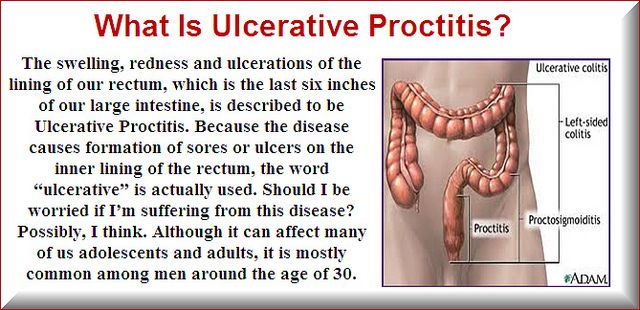 Diverticulitis is rarely fatal, though some studies have found that the condition slightly increases your chance of colorectal cancer.
Diverticulitis is rarely fatal, though some studies have found that the condition slightly increases your chance of colorectal cancer.
Yes, it’s possible to have both ulcerative colitis and diverticulitis at the same time. While there’s not a lot of research about this phenomenon, it’s considered a rare occurrence.
If you have any symptoms of diverticulitis or ulcerative colitis, it’s important to get a proper diagnosis to determine if you have one or the other condition, or both at the same time.
Ulcerative colitis and diverticulitis are both conditions that affect your digestive system. They have some symptoms in common, such as abdominal pain, diarrhea, and blood in the stool. However, they are entirely different conditions, with different diagnoses and treatment plans.
If you have symptoms of either condition, it’s important to see your doctor to determine whether you have either of these conditions. Without the right treatment, both ulcerative colitis and diverticulitis can get worse and lead to potentially serious complications.
Colitis vs diverticulitis: difference and comparison
Inflammatory diseases of the colon include colitis and diverticulitis. Colitis is an inflammation of the large intestine. Diverticulitis is an inflammation of the diverticula in the colon.
Science quiz
Test your knowledge on topics related to science
1 / 10
The filament of a light bulb consists of
tungsten
nichrome
graph um
iron
2 / 10
The first link in all food chains is
Herbivores
Carnivores
Green plants
All of the above
3 / 10 90 003
Which of the following glands is located in the human mouth?
Adrenal
Pituitary
Genital
salivary
4 / 10
Galvanized iron sheets coated
lead
9000 2 chrome
zinc
can
5 / 10
Permanent water hardness can be eliminated by adding
sodium carbonate
alum
potassium permanganate
lime
6 / 10
What is another name for Newton’s first law?
Action-reaction
Change of momentum
Law of inertia
Constant momentum
7 / 10
Which of the following metals remains in a liquid state under normal conditions?
Radium
Zinc
Uranium
Mercury
8 / 10
The bond between non-metals and non-metals is called ___________.
Ionic bond
Covalent bond
Non-metallic bond
9 / 10
Which food has the most energy?
Carbohydrate
Protein
Fat
Vitamin
10 / 10
What instrument is used to measure atmospheric pressure?
Ammeter
Voltmeter
Seismograph
Barometer
your account
Key findings
- Colitis includes inflammation of the colon, and diverticulitis occurs when small sacs in the colon (diverticula) become inflamed or infected.
- Colitis has several types, including ulcerative and infectious colitis, and diverticulitis is a specific disease.
- Treatment for colitis varies depending on the cause, while treatment for diverticulitis often includes antibiotics, pain medication, and dietary changes.
Colitis vs. diverticulitis
Colitis is a disease caused by inflammation of the lining of the colon, which can be caused by infection, allergic reactions, or inflammatory bowel disease. Diverticulitis is a gastrointestinal disease that forms in the wall of the colon and inflames the diverticula.
Diverticulitis is a gastrointestinal disease that forms in the wall of the colon and inflames the diverticula.
Colitis is an inflammation of the inner lining of the large intestine. Infection, inflammatory bowel disease, ischemic colitis, allergic reactions, and small colitis are just some of the causes of colitis.
Diverticulitis, especially colonic diverticulitis, is a gastrointestinal disease. It can form in the colon wall and cause diverticula to become inflamed.
Comparison table
| Comparison parameters | ||
|---|---|---|
| Definition digestive system. | Diverticulitis is inflammation of a diverticulum, especially in the colon and intestines. | |
| Location | Rectum, colon, lower intestine. | Lower abdomen. |
| symptoms | Severe stomach discomfort and tenderness, diarrhea, fecal incontinence, flatulence, emaciation, loss of appetite, and unexplained weight loss are all symptoms of this condition.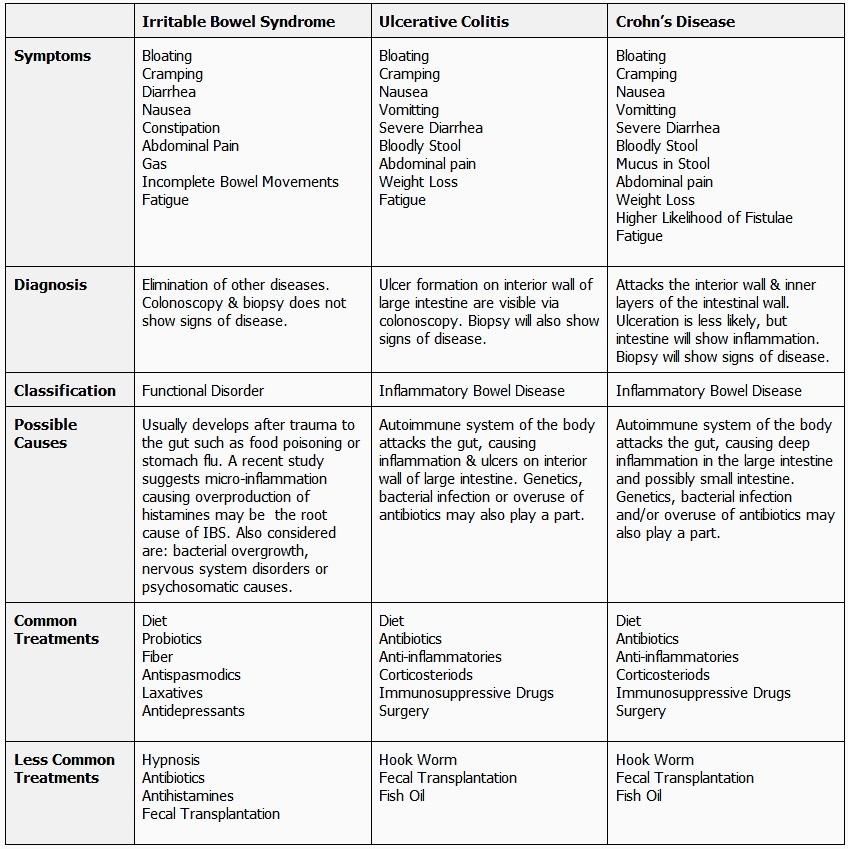 | pain in the lower quadrant of the abdomen, dizziness, diarrhea and blood in the stool. |
| Diagnostic method | Colon x-ray, fecal analysis, sigmoidoscopy and colonoscopy. | Fecal analysis, CT, colonoscopy. |
| Type | Ulcerative colitis, microscopic colitis, pseudomembranous colitis, ischemic colitis and Crohn’s colitis. | Simple or complex. |
| Risk of cancer | High risk of cancer. | Negligible risk of cancer. |
What is colitis?
The large intestine, often referred to as the large intestine, becomes inflamed in colitis. If you have colitis, you will have abdominal discomfort and pain that can range from mild to severe and come on quickly.
Colitis is not cured by nutrition. However, finding a balance between getting the nutrients you need and avoiding foods that can make your symptoms worse can help you manage your illness.
However, finding a balance between getting the nutrients you need and avoiding foods that can make your symptoms worse can help you manage your illness.
The colon is home to several microorganisms that coexist with the body and do not cause any symptoms. The most common species are Shigella, Campylobacter, Ecoli, Escherichia and Yersinia. bacteria that cause colitis.
Treatment for colitis is determined by the underlying cause and often focuses on the symptoms. reduction, supportive care, adequate hydration and analgesia.
What is diverticulitis?
Diverticulitis is a type of colitis, which is an inflammatory bowel disease. It can be serious and require surgery if not treated quickly.
Diverticulitis develops when the thin necks of diverticula become clogged with debris or indigestible food, and bacteria proliferate in blind sacs unchecked by the normal movement that keeps the intestines clean.
There are some indications that patients with diverticula, which are precursors of acute diverticulitis, have mild chronic inflammation.
Indigestion diverticulosis affects a large number of people in wealthy Western countries. Although most people with diverticular disease are asymptomatic, 10 to 25% of people with diverticulosis develop diverticulitis.
Key differences between colitis and diverticulitis
- Inflammation in ulcerative colitis begins in the rectum and can spread to the large intestine. While diverticulitis pain is usually felt on the lower left side of the abdomen.
- A person’s risk of developing cancer increases by about 0.5–1% each year after 8–10 years of non-specific ulcerative colitis. On the other hand, diverticulitis is associated with a very low risk of cancer.
Recommendations
- https://www.ncbi.nlm.nih.gov/pmc/articles/PMC1981500/
- https://www.nejm.org/doi/full/10.1056/nejmcp073228
One request ?
I put so much effort into writing this blog post to provide you with value.:max_bytes(150000):strip_icc()/diverticulosis-vs-diverticulitis-5201446-Final-42abf0bed6dc44a19900a7bd88ffbd00.jpg) It will be very helpful for me if you consider sharing it on social networks or with your friends/family. SHARE ♥️
It will be very helpful for me if you consider sharing it on social networks or with your friends/family. SHARE ♥️
Piyush Yadav
Piyush Yadav has worked as a physicist in the local community for the last 25 years. He is a physicist passionate about making science more accessible to our readers. He holds a Bachelor of Science degree and a Graduate Diploma in Environmental Science. You can read more about him on his bio page.
symptoms, diagnosis, treatment of diverticulitis – Department of the State Hospital NCC No. 2 (CCH RAS)
Diverticula are areas of the intestine in which protrusion of tissues is observed. When inflammation of these areas occurs, intestinal diverticulitis begins. Inflammation is provoked by fecal masses that enter the diverticula and accumulate in them, irritating the walls and leading to the development of infection. Long-term malnutrition is considered the main cause of the onset of the disease. Adult patients usually suffer from diverticulitis – it develops in women and men over 60 years of age.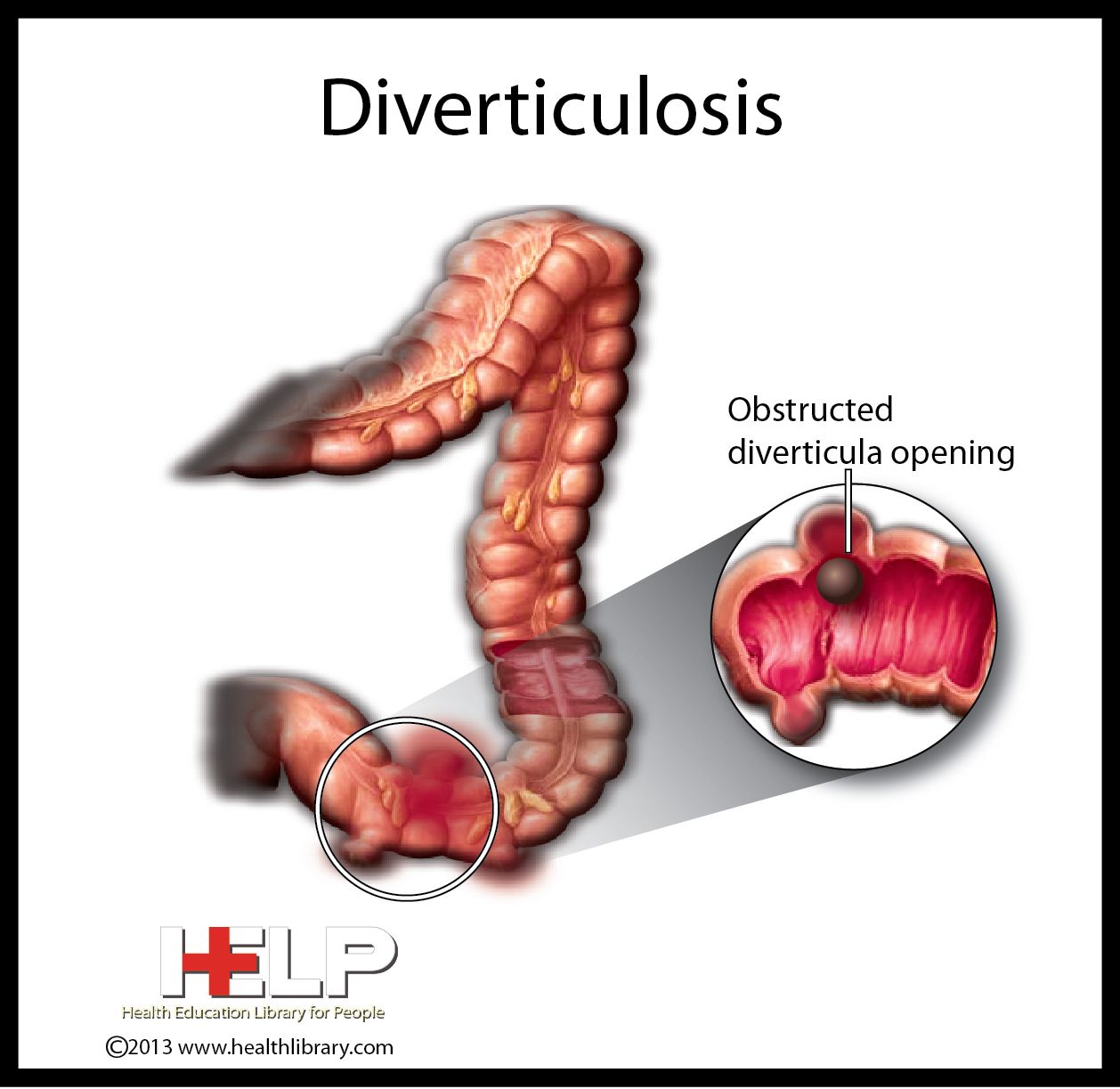
Causes of disease
The main factor that provokes the disease is malnutrition. This refers to the use of a large number of semi-finished products, low-quality food rich in fat and refined foods. Also, malnutrition includes reduced fiber intake. It is fiber in food that helps the proper movement of the masses through the intestines.
Localization of diverticulitis
The disease can affect different parts of the intestine:
- Diverticulitis of the small intestine – multiple protrusions of the mucosa through weak spots in the walls. In this zone, diverticula appear much less frequently than in the colon. The cause is believed to be a failure of peristalsis.
- Diverticulitis of the large intestine – masses up to two centimeters, often affecting elderly patients. The reason is malnutrition, the predominance of animal food over plant food.
- Diverticulitis of the sigmoid colon – a degenerative tissue disorder that appears as a result of a violation of peristalsis and vascular pathologies.

Symptoms of diverticulitis
When the disease begins, its symptoms in most cases are absent. Only when the disease passes into the chronic stage, there are signs by which it can be identified. Among the warning signs that indicate the presence of problems:
- Bloating, excessive flatulence.
- Traces of blood in the stool.
- Increased body temperature.
- Pain in the lower abdomen and back.
- Nausea, vomiting.
- Decreased appetite.
- Cold sweat.
Disease diagnosis
This serious complication requires immediate diagnosis, analysis of symptoms and treatment. The initial task of the doctor is to distinguish diverticulitis from stomach ulcers and irritable bowel syndrome. It all starts with a patient interview, a medical history, and an initial examination. Diagnostic methods that are used for suspected diverticulitis:
- Colonoscopy
- Sigmoidoscopy
- Irrigoscopy
- Computed tomography of the intestine
- X-ray of the intestines
- ultrasound
- Clinical analysis of urine and blood
Treatment of disease
There is a resolution of diverticulitis without special treatment due to the normalization of nutrition and diet. With a serious stage of the disease, how to treat it is determined individually and often in a hospital. In this case, the patient is given antibiotics and other supportive drugs. The operation is performed in order to separate the affected part of the intestine. Such a measure is required quite rarely:
With a serious stage of the disease, how to treat it is determined individually and often in a hospital. In this case, the patient is given antibiotics and other supportive drugs. The operation is performed in order to separate the affected part of the intestine. Such a measure is required quite rarely:
- If the disease is severely advanced. There are fistulas, perforations, abscesses.
- When antibiotics do not help to get rid of the problem.
- There is bleeding, peritonitis.
Risk of complications
Most of the complications of diverticulitis are associated with perforation, leakage of feces through the walls of the intestine:
- Abscess – removal of the affected part or puncture is required.
- Peritonitis is the spread of infection into the abdominal cavity. The operation is necessary to cleanse the abdominal cavity and remove part of the intestine.
- Intestinal obstruction – scarring resulting in partial or complete occlusion of the lumen.



